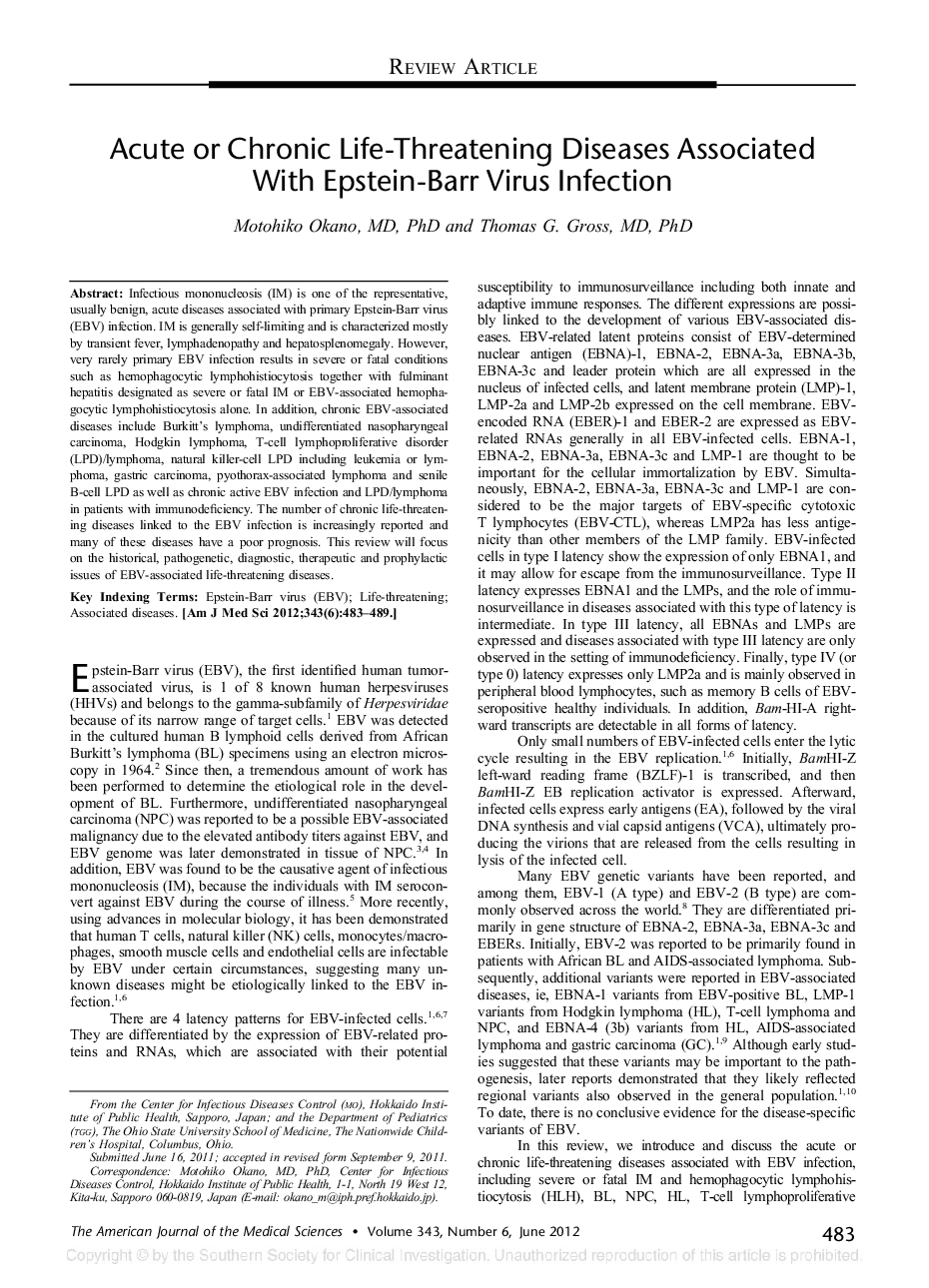| Article ID | Journal | Published Year | Pages | File Type |
|---|---|---|---|---|
| 2863747 | The American Journal of the Medical Sciences | 2012 | 7 Pages |
Infectious mononucleosis (IM) is one of the representative, usually benign, acute diseases associated with primary Epstein-Barr virus (EBV) infection. IM is generally self-limiting and is characterized mostly by transient fever, lymphadenopathy and hepatosplenomegaly. However, very rarely primary EBV infection results in severe or fatal conditions such as hemophagocytic lymphohistiocytosis together with fulminant hepatitis designated as severe or fatal IM or EBV-associated hemophagocytic lymphohistiocytosis alone. In addition, chronic EBV-associated diseases include Burkitt’s lymphoma, undifferentiated nasopharyngeal carcinoma, Hodgkin lymphoma, T-cell lymphoproliferative disorder (LPD)/lymphoma, natural killer-cell LPD including leukemia or lymphoma, gastric carcinoma, pyothorax-associated lymphoma and senile B-cell LPD as well as chronic active EBV infection and LPD/lymphoma in patients with immunodeficiency. The number of chronic life-threatening diseases linked to the EBV infection is increasingly reported and many of these diseases have a poor prognosis. This review will focus on the historical, pathogenetic, diagnostic, therapeutic and prophylactic issues of EBV-associated life-threatening diseases.
